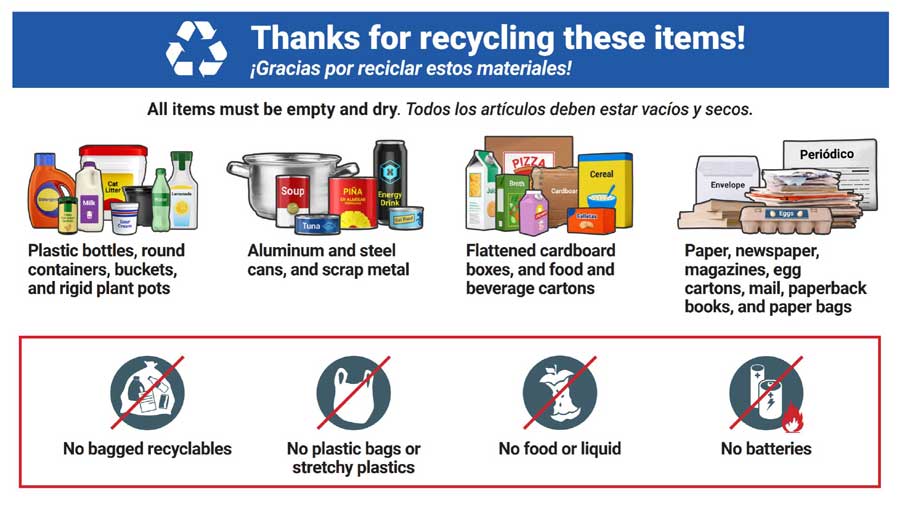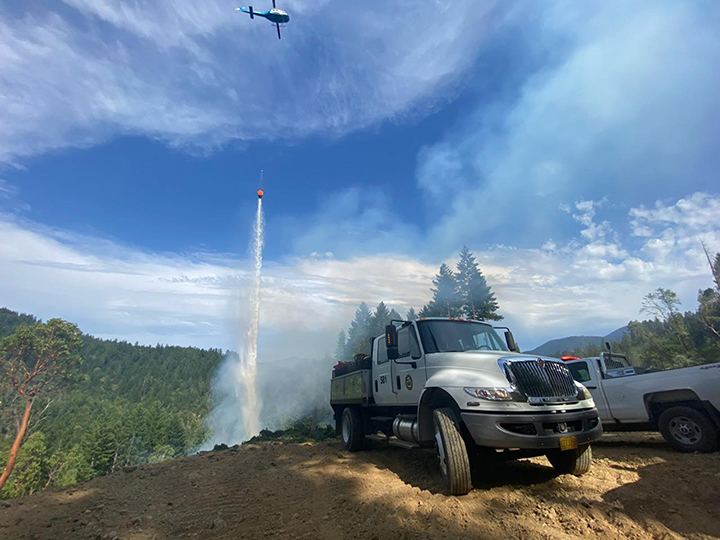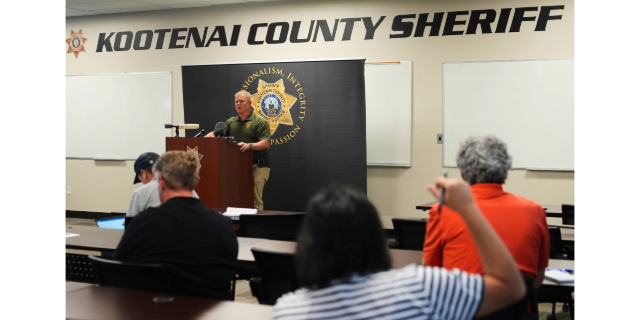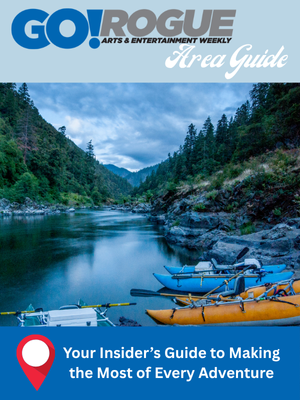Scientists use North Coast aerial surveys to search for leatherback turtles
Published 7:00 am Sunday, September 1, 2024
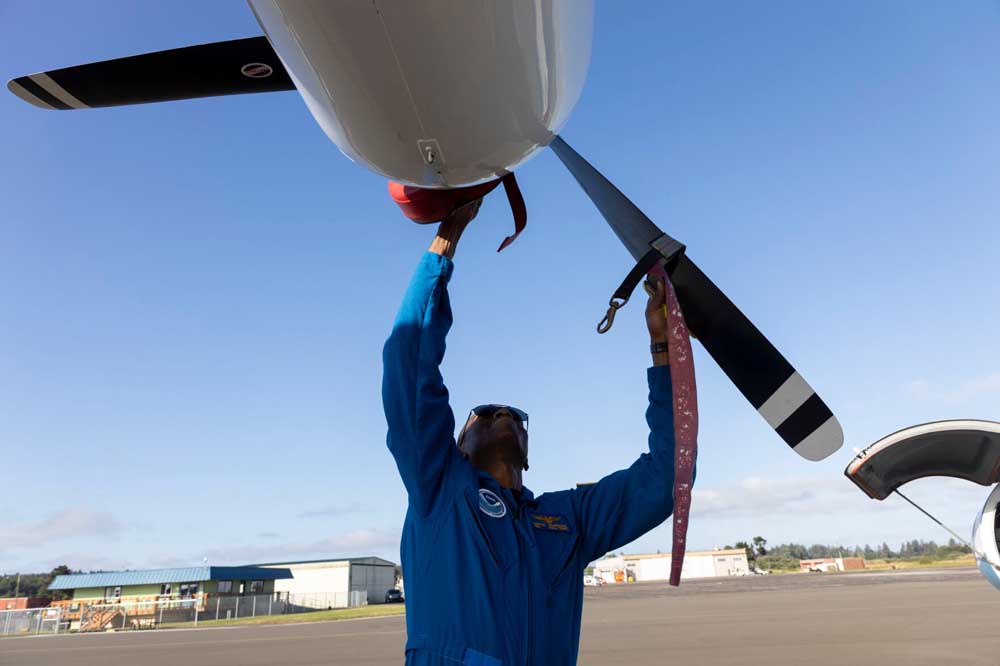
- Pilot Martial Ngangnang readies the NOAA Twin Otter last Wednesday for an aerial survey for leatherback turtles.
As someone who’s spent decades researching the Western Pacific leatherback turtle, Scott Benson knows a thing or two about the species: they’re ancient, massive and tricky to spot.
Benson, a research fish biologist with the National Oceanic and Atmospheric Administration, has spent plenty of time on the water to understand leatherbacks’ dwindling populations, but recently, he’s also been doing research from a more unexpected location.
This week, his work began 650 feet in the air.
On Wednesday, Benson and a team of fellow researchers made their way across the tarmac at the Astoria Regional Airport in Warrenton toward a NOAA Twin Otter — a modest-sized plane set to fly them up to the northern tip of Washington state for the last in a series of aerial surveys this season.
The surveys, which are supported by the federal Bureau of Ocean Energy Management and nonprofit partners at Upwell, give researchers a bird’s eye view of the waters along the West Coast, helping them chart the locations of leatherback turtles and other species like whales, dolphins and ocean sunfish. The work is done in tandem with a boat to search for turtles, tag them and release them back into the ocean.
“The aerial survey data is very helpful, and we can’t find turtles without the help of the airplane — even though they’re large animals, they’re very cryptic,” Benson said. “But really what we’re primarily after is trying to put our hands on one so we can put a transmitter on and then learn more about how the animal is using waters of the Pacific Northwest.”
Every few years, leatherback turtles nest on the beaches of the Western Pacific in areas like Papua New Guinea and Indonesia. Then, they migrate across the Pacific Ocean to feast on jellyfish in the Pacific Northwest. As one of the oldest and largest turtle species in the world, Benson thinks of the leatherback as a unique survivor — but numbers from recent decades suggest that feat is becoming an uphill battle.
In the past 30 years, leatherback populations have plummeted, largely due to illegal, unregulated or poorly regulated fishing, with longlines and gillnets claiming many as bycatch during their 7,000-mile journey across the Pacific. Now, the species is at extreme risk of extinction.
The hope with aerial surveys is to inform regional fisheries on which areas to avoid, and inform work around fisheries in Oregon and Washington as the states look to both reduce the risk of whales tangling with commercial gear and protect fishermen from the ramifications of accidentally snagging endangered marine animals. Additional data could help fill gaps as the state takes the beginning steps to apply for a federal incidental take permit for the commercial Dungeness crab fishery.
The work could also help fill gaps in data as the Bureau of Ocean Energy Management looks to move forward on floating offshore wind projects on the West Coast, including two potential areas near Coos Bay and Brookings.
“We want to keep our fisheries vibrant and active and working, and so we’re trying to get data to help them, in addition to other users, whether it be wind energy developments or, you know, terminals for liquid natural gas — anything that might potentially disrupt the animals,” Benson said.
Aboard the NOAA Twin Otter
As pilots wiped down windows and performed final checks Wednesday morning, Karin Forney made her way up the narrow steps of the Twin Otter, crouching slightly as she entered the main cabin and made her way past four seats, each equipped with a mint green headset.
Forney, another research biologist with NOAA’s Southwest Fisheries Science Center, is no stranger to aerial surveys. Although the Twin Otter’s confines might seem cramped to the average flyer, she considers it pretty luxurious compared to other small aircraft she’s been in.
On any given trip, she explained, three observers keep watch for turtles and other marine life, reporting what they see in real time to a data recorder with a laptop onboard. Two observers at the front look through bubble windows, which protrude out a foot or so from the plane beneath its high wings, allowing them to stare directly down into the water below. Forney’s favorite observation spot, however, is at the back of the plane.
Moving toward the entrance, Forney flipped open a hatch in the floor, revealing yet another convex window. The opening, called a belly window, is aptly named; to look through, Forney lies on her stomach with her head above the hatch.
“This is the best seat in the house,” she said, looking up from her spot atop a set of foam mats on the floor.
To help gauge angle and distance, the floor observer relies on tick marks on the belly window indicating degrees. The bubble window observers use a clinometer — a metal device just smaller than a deck of cards with an eyepiece on one side.
Although searching for sea creatures may seem like a dream job, it’s also hard work. Moving at 100 knots, the opportunity to spot and identify animals is fleeting, and often, species look far different from above than they do on a boat. Even with decades of experience, Forney said she still sometimes encounters situations that surprise her. Benson feels similarly.
“Your brain is processing so much information so quickly to identify and count animals as they go by at 100 miles an hour,” he said.
‘Hard to find‘
Each year, aerial surveys take researchers up and down the coast, from central California to northern Washington. This week, Benson, Forney and the team ventured over Cape Elizabeth, Washington — an area teeming with sea nettle jellyfish, which indicate prime leatherback habitat.
The jellyfish’s abundance doesn’t necessarily translate to prolific leatherback populations, though. In fact, over the last three years of surveys, the team has only ever observed one leatherback in the Pacific Northwest. To Forney, that’s an indication of the work still needed to restore the species.
Around 2010, Forney recalls conducting leatherback surveys. At that point, she still came across a handful of the turtles.
“Fourteen years later, every turtle is really hard to find now,” Forney said. “So it’s kind of very evident in the data that the numbers of turtles have declined over time. And hopefully we can recover them at some point, but it’ll be a slow process.”
That process, Benson said, would require a concerted effort on the part of the entire international community that uses the Pacific Ocean. Not all fishing nations have measures in place like the United States’ Endangered Species Act, but adopting clear regulations could make the difference in saving an ancient species.
“It’s quite remarkable,” Benson said. “And we really don’t want to lose it on our watch.”


